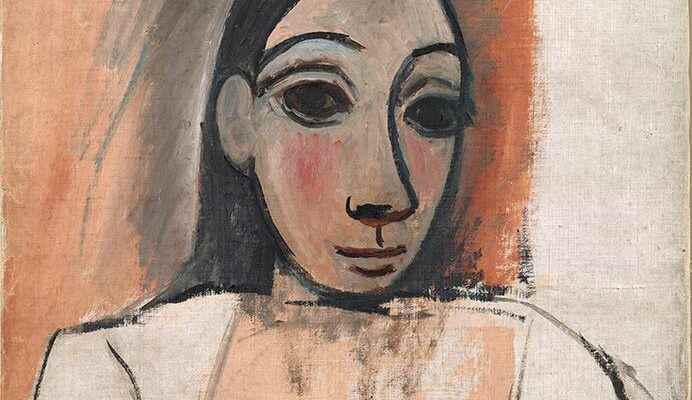Fernande Olivier, whose real name is Amélie Lang, seems to have been Pablo Picasso’s first beloved wife in Paris, his first Parisian mistress. It happened in Montmartre, in August 1904, they are the same age. She has lived at the Bateau-Lavoir for three years, a sort of artists’ residence not approved by the Ministry of Culture, she works there as a model for this band of homeless daubers, young, some brilliant, like Picasso, who arrived there. three months earlier, and who watches this beauty pass without daring to approach her. He makes up his mind, offering her a little dog as a bouquet of flowers. They sleep. He can’t help but draw this moment, she’s lying on her back, he’s on top of her, naked, stiff while she can’t help but write: “He, really, and alone, me held sensually”. Because she writes, Fernande, she has kept her diary since she was 15 years old. They will stay more than eight years together. Eight years during which Picasso will revolutionize the world of art. The first cubic woman is Fernande. He is madly in love with her, and jealous, so anxious to lose her that he locks her up when he leaves the workshop (he will stop this practice after a fire in a neighboring workshop made him understand the hazards). They will not have children together, but a mutual affection binds them to little Dolly, the daughter of the neighbors, the Van Dongen. Dolly adores Picasso, whom she calls Tablo.
But that’s not just the subject of the exhibition currently being held at the Musée de Montmartre, 12, rue Cortot. What interested Nathalie Bondil and Saskia Oms, the curators, was Fernande Olivier’s entire life, before, during and after Picasso. His life with other men, starting with his father: “not denounced”, but who pays a pension to an aunt to whom the child is entrusted. In her diary, Fernande Olivier recounts the first rape committed on her by an uncle. Faced with the monstrosity of the crime, it might seem out of place to say that it is well written, but it is well written. And even better when she talks about her husband, the alcoholic Mr. Percheron, also a rapist, and seven times the night he gets her pregnant. That, Fernande Olivier did not write, and will not tell anyone: “I had a miscarriage falling down the stairs”. The boy born of the rape is entrusted to the Assistance Publique.
Her aunt forces her to marry, seeing in the rapist a good match for this girl who encumbers her, but for that the mother has to come and recognize her daughter, still a minor. And this is how Amélie Lang finds herself Madame Percheron, at 17, the legitimate plaything of a torturer husband. Aristide Bruant has only to bend down to collect all that in a song. It’s not over. But too much is too much. When he attacks her with bottle shards, she runs away. Change of name, Amélie Percheron becomes Fernande Olivier.
She enters Picasso’s life possessing nothing, she leaves without possessing more. The crux of the plot is that she never dared to tell Picasso that she was married, having never known herself that her husband had died four years after she abandoned him. to his alcoholic dementia. If she had known, she would have told Picasso, who would probably have married her. To the 300 portraits that the master had already made of her, there would have been added others even more cubist. In any case, she would not have ended up in loneliness, anonymity and poverty. Fernande Olivier died in 1966, without having seen her son again, who never knew anything about his mother or Picasso.
We will console ourselves for this magnificent social drama with this very moving exhibition, the first, it seems, ever devoted to a model. Beyond the relationships between men and women, the cream of the day, it is the enigma of human violence and its relationship to art that is posed here, and insoluble.
